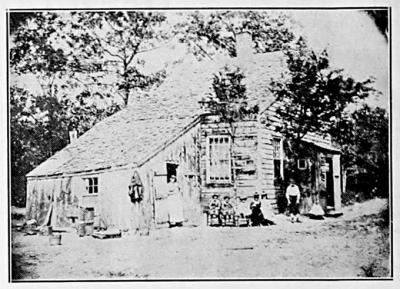The Mast-Head: Baffling Roundabouts

Say the word “roundabout” round about here and people go nuts. This is true even though these road configurations, also known as traffic circles, tend to work well at what they are supposed to do — route vehicles at complex intersections efficiently without causing backups.
East Hampton Village is the most recent convert to roundabout ways, with a real doozy nearing completion where Buell Lane, Toilsome Lane, Buell Lane Extension, and the Sag Harbor Road come together. Work has gone on nearly all summer with sweltering workmen laying cobblestone and, this week, new asphalt bringing withering scowls from those who pass by in air-conditioned comfort.
When the Buell Lane roundabout was approved, I did wonder out loud what its purpose was. Yes, there were a few motor vehicle accidents each year at the intersection as it used to be laid out. But without a doubt there will be accidents in the future as well. Slowing to look closely one morning this week, I realized there was no room in the narrow spaces for the many bicyclists who will pass through and that buses and fire trucks and other large vehicles will find it tricky to maneuver.
All that said, I find myself a fan of the new thing in all its baffling glory. The roundabout itself is more of an oval; the approaches are nearly blind, at least from the Buell Lane and Sag Harbor Road sides. Once inside the sort-of circle, especially in the direction of East Hampton Main Street, right-hand and then quick left-hand turns, which are required, seem like something out of a BMW commercial. Yet I love the roundabout despite all its unintentional perversity.
Up until the railroad reached East Hampton and Amagansett in 1895, travelers to New York City went first via Sag Harbor over a sandy wagon track by horse coach. Along the way was an open-air pit that the locals called the Dead Hoss Cemetery, where beasts of burden would end up once their time was up. Communication in the age of the telegraph went that way, too, on wires leading to Sag Harbor and then on to the outside world.
Jerry Baker operated the route for about 50 years, carrying passengers and mail to or from “the Port,” as Sag Harbor was called, and where there had been train service since 1870. A toll keeper, whose house was opposite where the Jewish cemetery is today, extracted a small sum from 1878 to about 1905, when the town took over the road, but there was a back way, a woods track for which nothing was charged to pass.
The cost for a single horse and farm cart was 5 cents. Baker paid the toll collectors 20 cents each way. One cent was taken off if you were going to the Buckskill path, as you did not use that much road before the turn-off. The tollhouse burned to the ground in November 1909.
Baker also brought The East Hampton Star over each week from Sag Harbor, already printed, but for a single page on which George Burling, the editor, printed the local news he could gather up.
